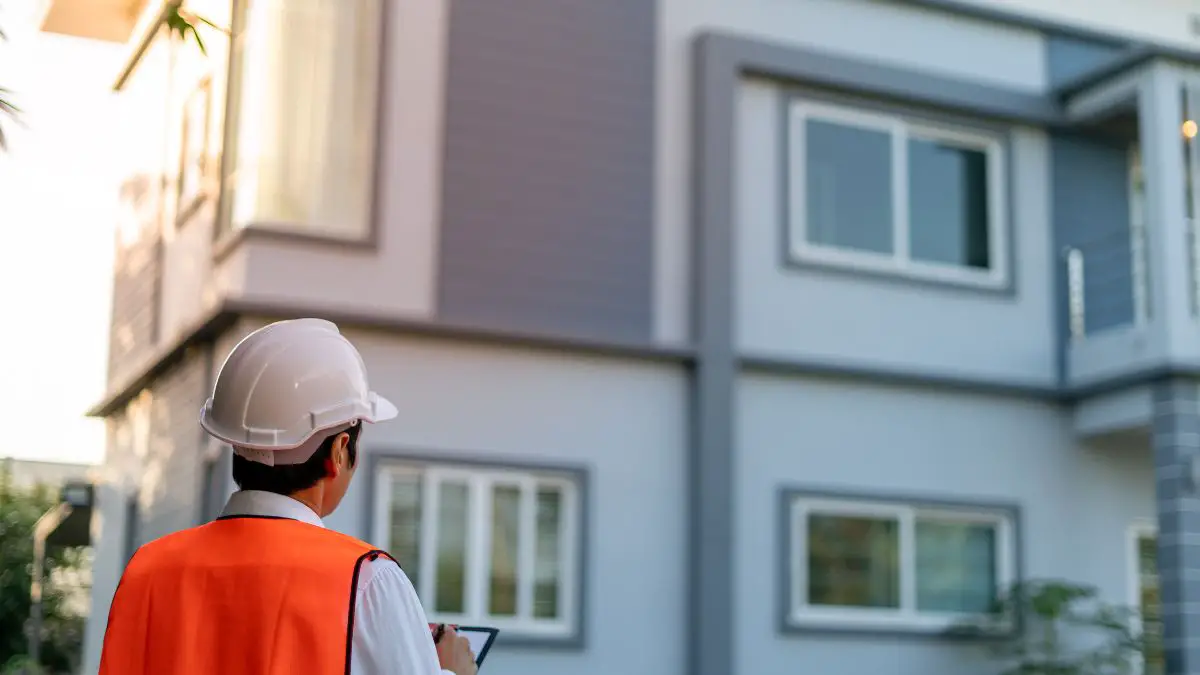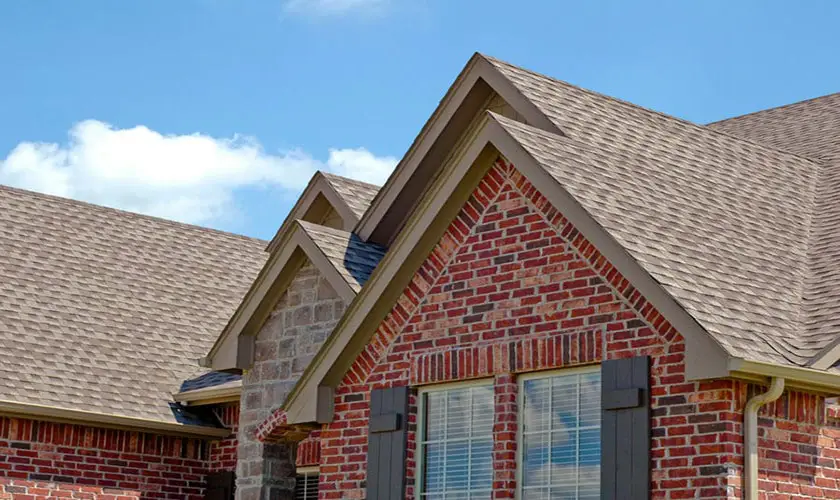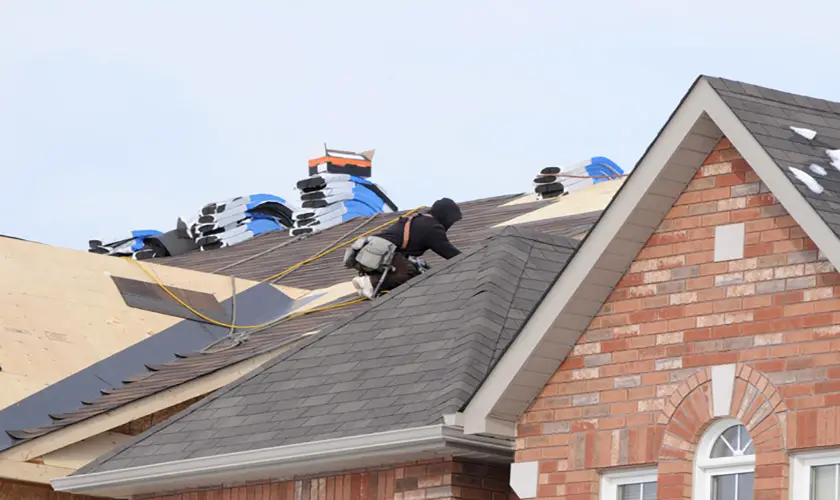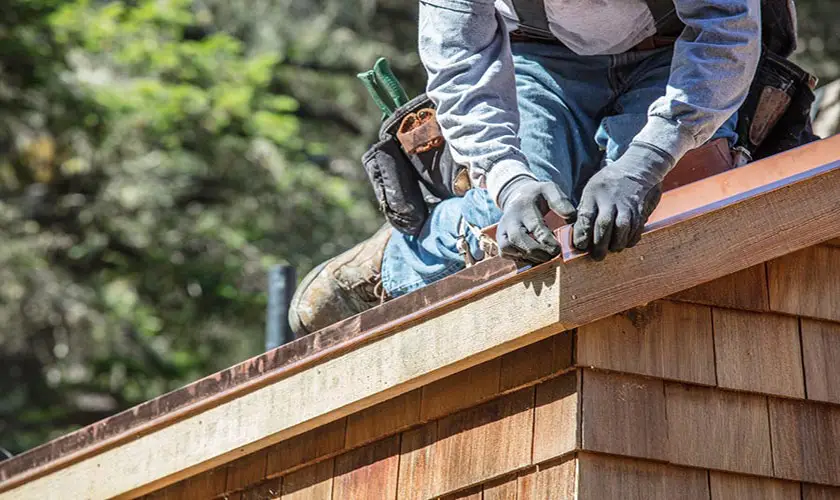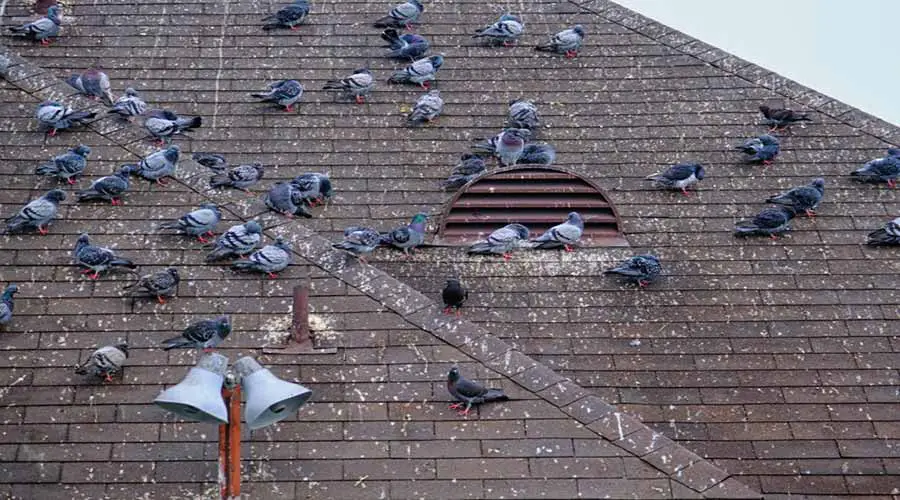
Stucco is a popular choice for many homeowners because it delivers the look of brick without the price tag. However, over time stucco can become damaged or discolored. Fortunately, there are ways to replace stucco with siding that will make your home more attractive and provide better protection against water damage.
Replacing exterior stucco with siding is pretty straightforward. Obtain a quote from a contractor if you aren’t doing the work yourself and get the appropriate permits. After you are done with the preparations, remove the old stucco and replace it with your chosen siding.
We’ll discuss some tips for replacing stucco with siding that will help you get the job done right. Also, we’ll have an in-depth exposition of further insights on stucco replacement.
Tips for Replacing Stucco with Siding
As mentioned above, there are many benefits to replacing stucco with siding, but the top advantage is price and aesthetics. Homeowners will immediately notice the beauty of siding available in various colors and textures. Additionally, siding is more affordable than brick which means you will afford an upgrade without spending your life savings.
1. Determine Your House Siding Needs
Before you even begin thinking about installing new siding on your home, take some time out to think about what your needs are. Consider factors such as cost, durability, and type of exterior that will best suit your home’s architectural style.
Consider what kind of weather you expect to pass through in your area when thinking about siding materials. Suppose your home is in a place where temperatures vary greatly between seasons. In that case, aluminum sidings may be a more practical choice because they repel water and are naturally resistant to warping, splitting, cracking, and peeling at the seams.
But if the price is your main concern, vinyl or fiber-cement might be a better option. These types of sidings are more durable than wood or plastic. They tend to be a little cheaper than aluminum, which, as mentioned above, offers excellent protection against weather damage while needing less maintenance.
Additionally, with installing custom or specialty-sized sidings, you may find yourself paying higher prices than you anticipated since it will take an experienced contractor longer to put up these types of sidings during installation.
2. Get a Quote from a Professional
Speaking of an experienced contractor, finding a contractor to handle your project is crucial once you have decided to replace stucco with siding.
Nonetheless, it is not as easy as it sounds since most contractors will provide an estimate which can cover either part or all of the work. For example, some contractors may only be willing to replace the existing siding if they also install new gutters and downspouts at the same time.
Thus, before you choose a contractor, please consider what they can do for you, so you don’t end up paying for unnecessary work.
The cost depends on several factors, including the size of your home and how extensively you need to replace your siding. The average cost is between $3,000 to $5,000 for replacing damaged or deteriorated stucco exterior. You can also expect additional charges if you choose to replace windows as well as gutters and downspouts.
Make sure to budget for improvements your property manager has recommended, so your project goes smoothly without overages.
3. Apply for Permits and Approval
Before beginning any project on your home, you may need to apply for a permit. It is especially true if you live in an area with strict building codes, as some types of siding can change the structure of your home’s exterior.
Thus, before starting the project, ensure that your contractor and municipality approve all permits.
4. Properly Remove Old Stucco
Ensure that you adequately remove the old stucco before installing new siding on your home. If it isn’t, you could end up with unsightly gaps between the old and new, which will be more costly to fix later on.
Yes, but it is not recommended because, in most cases, stucco is attached to the sheathing to make removing the material dangerous and costly. This process can also cause extensive damage if not done correctly.
You will be better off hiring a professional for removing damaged stucco than attempting to do it yourself. If you choose to replace sections of your home’s exterior, ask your property manager about what materials they recommend; this could save both time and money compared to having professionals do the work for you.
5. Caulk, Paint, and Prime the Siding
Once you install new siding on your home, it is essential to caulk any gaps that are larger than four inches. It will ensure that water doesn’t get into the structure of your home, which can cause problems with mold or insects that live in wet places.
What is the Best Siding Paint and Primer?
You can use latex paints and primers on either vinyl or wood sidings. However, latex siding paints will usually not withstand temperature extremes like masonry varnishes.
Therefore, masonry varnishes (paints that can withstand both high temperatures and humidity) are more effective at protecting the surface of your home. To prevent rot, you should apply the exterior finishing products over redwood or cedar siding.
Vinyl sidings often do not require additional treatment since they naturally resist mold and mildew growth (similarly to masonry varnishes).
You should treat wood siding with a copper-based anti-fungicide before applying your paint. It will protect against fungal infestation and rot, which can cause extensive damage to your home in just a short period.
What are the Best Colors for Siding?
Depending upon where you live, specific colors may be more attractive than others.
For instance, homes in the desert may fare better with lighter shades if their siding is exposed to too much sun. Homes near oceans may need to choose darker colors since they are less prone to fading from the effects of the saltwater spray.
Another consideration is which color will look best with your house’s roofing materials and landscaping strategies.
6. Avoid Common Home Remodeling Mistakes
As you can see, replacing stucco with siding is very involved. Thus, hiring a reputable contractor who knows what they are doing is essential. Otherwise, you could end up with an unpleasant surprise such as a home renovation nightmare.
To avoid additional expenses and home remodeling mistakes, we addressed some of the questions about stucco replacement to ensure you will be satisfied with the results of your siding project.
Can You Use the Same Windows and Doors When Replacing Siding?
Many people assume that they cannot use their windows and doors if they replace the stucco on the exterior of their home. The fact is, there’s no need to replace your windows or doors when removing stucco.
However, it is important to consider ventilation around these openings. During installation, make sure that you leave enough room for the new siding to overlap the window or door. If you want to, caulk the old and new siding gap.
You should also leave room for expansion. Stucco is naturally flexible, but other materials, such as fiber cement or vinyl, are not. If these types of siding are installed too tight against an existing opening, they can pull away from or crack the window or door frame.
Can You Repair Only Small Sections of Stucco?
Yes, but in most cases, you will need to remove and replace a larger area to ensure that you protect your exterior against inclement weather. You can easily repair small sections using cement products, paint, or vinyl cladding if the damage is not extensive. If large portions show signs of deterioration or rot, it may be prudent to have all of your stucco sidings replaced
What About Siding Drain Spacing?
Installing drains is very important to protect your house’s sidings from water damage. If you have not already installed drainage spouts, consider choosing a professional contractor to help you determine the best way to install them.
Drain spacing will vary depending upon your particular home’s needs, but you must have at least one downspout per 50 feet of the house.
Alternatively, many homeowners choose to adopt the “French Drain” system, which consists of gravel-filled trenches positioned around the perimeter of your exterior walls with tubing running through them to direct water away from the foundations and windowsills.
7. Hire an Experienced Contractor
You must hire a contractor who has plenty of experience performing this work and can provide referrals if needed. It will make the project progress much smoother and ensure your siding looks great once installed.
That said, if you follow the tips provided above, you will have nothing to worry about.
Is it Cheaper to Hire a Contractor or Install Siding on Your Own?
The answer to this question depends upon the specific contractor you are considering hiring, their costs for labor and materials, and finally, your knowledge of carpentry.
If you hire a contractor who does not have experience in siding installation, then it may end up costing more than having it installed the first time correctly by an expert.
On the other hand, if you have experience with woodworking projects or an interest in learning how to work with different exterior cladding materials, the DIY siding could be right for you.
What is Stucco Siding and When Should You Replace It?
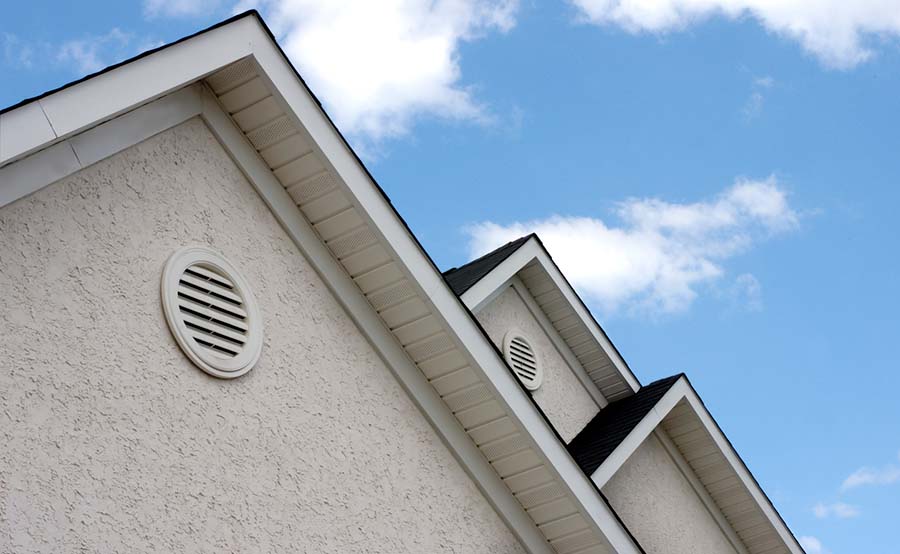
Stucco is a common building material used on the exterior of many buildings. There are many types of stucco siding, including:
- EIFS – The stucco exterior insulation finish systems (EIFS) are more common on commercial buildings than on some residential homes. A drawback is that EIFS requires regular maintenance to prevent discoloration and moisture damage.
- Limestone Stucco – When applied over wood or brick, limestone stucco gives a traditional look to your home. Limestone is porous, so it needs yearly application of an acrylic coating if you want it to last long term.
- Vinyl Stucco – Similar to limestone stucco, this material has the added advantage of being resistant to moisture. It is easily applied over other types of siding and can give your home a uniform appearance.
- Slip Straw Stucco – Straw was once inserted between the exterior and interior walls of homes as insulation but has since been replaced by foam. Slip straw stucco is made up of a base coat that is thicker than regular stucco and a top coat that helps protect it from moisture
- Colored Stucco – Colored stucco can be easily applied to give your home a unique look. It is not as resistant to weather elements as other stucco forms, so you may need to reapply more often if you live in an area with high humidity.
Stucco’s most significant advantage is its ability to last for decades without needing much upkeep, but it also has a long list of disadvantages.
Proper maintenance can prevent damage or leaks until you are ready for stucco replacement, but sometimes the only option is removal and replacement. If you are considering replacing stucco or you want to know when it is necessary, five common problems indicate stucco replacement is needed:
Cracks in the Surface
Micro-cracks will naturally occur in a healthy stucco system over time, but they should be barely visible without magnification. If you can see cracks with your eyesight, they are getting larger and could become large enough to splinter the surface.
Missing Areas or Loose Stucco
When loose areas appear on the exterior of a building, it is time for damage control. You can easily patch any localized missing sections, but it is best to remove loose sections that have not adhered to the building.
Blistering
When an area of stucco begins to get dry and crack, it is a sign that moisture is seeping through underneath. You can prevent blistering by applying paint over the top of the stucco, but blistering indicates that water has already breached this barrier. If possible, remove any loose stucco before adding a new layer of paint or siding.
Cracks Inside the Wall
If you notice cracks inside the wall that correspond with visible cracks outside, it is likely due to moisture. You can attempt to seal these cracks from the inside if water seepage is only an occasional problem, but if not, removing and replacing stucco will be necessary.
Stains
If moisture is present, stucco can become stained. You can clean some stains with household bleach, but if the stain continues to get worse, it is time for professional cleaning or complete removal and replacement.
Types of Siding that You Can Use to Replace Stucco

Here are some of the most popular house siding choices that people use to replace their stucco siding.
1. Fiberglass Siding
Commonly used on new construction, this material is lightweight and inexpensive. You can paint it to give your home a uniform appearance, but it is more vulnerable to damage than other types of siding. You should maintain it yearly to prevent discoloration and fading.
2. Aluminum Siding
Aluminum has the longest life span of any siding material, but it is also one of the most expensive options. It does not need regular maintenance like other forms of siding, but it will eventually show signs of wear after years in an active environment.
3. Fibrex Sliding
A combination of fiberglass and vinyl makes Fibrex both durable and affordable. Its rigid surface provides resistance against water and air infiltration. You can easily paint it to match any home decor.
4. PVC Siding
PVC offers the advantage of being very lightweight, so it is easy to install yourself or with a professional. It comes in various colors and textures, but you should take care to avoid cracking when exposed to extreme temperatures.
5. Vinyl Sliding
Vinyl siding is an inexpensive option that can provide a uniform appearance if adequately maintained. Please do not use harsh chemicals on vinyl sliding, as they may cause damage over time.
Many homeowners choose to use a combination of both siding and stucco on their homes as it gives them more options for design and protection against the elements. It is especially true if you live in extreme weather conditions because it allows you to switch between styles according to the best protection.
What are the Benefits of Siding over Stucco?
Stucco and sidings have different compositions, giving them a fair share of benefits and disadvantages. Siding consists of durable materials specifically intended for exterior use. At the same time, traditional stuccos were made from reworked lime or gypsum plaster containing various ingredients such as sand, water, pebbles, and animal hair.
As a result, the difference in materials results in the following benefits of siding over stucco:
- Stucco, especially over time, can warp and even fade due to the elements. Siding tends to be less expensive than stucco without any loss in durability.
- Stucco’s finish is often rough with visible cracks and open pockets where moisture can seep through. Siding has a smooth texture that keeps out water and allows for better insulation (reducing your energy bills throughout the year).
- Some stuccos use nails or staples that are prone to rust, creating openings for water infiltration. Siding fastens much more securely with screws ensuring an airtight seal.
- Siding does not have to be painted, allowing your home a natural appearance. Some stuccos require annual painting that can wear off over time (even with suitable quality paints). It is especially true if the stucco is not kept clean and dry during winter when snow and rain can wash away paint.
- For homeowners who do not care for their homes often, the siding will require less maintenance than stucco since it does not need to be repainted every year. Maintenance on siding includes keeping it clean and applying protective sealant throughout the year to protect against water seepage.
- Some stuccos are not treated with mold and mildew inhibitors, which can cause them to darken over time. Siding is often treated with a fungicide that resists growth, allowing for a whiter appearance even it stays on your home for several years.
- Siding is cheaper than stucco in most cases when it comes to installation costs. Stucco is often more expensive due to its need for thicker material, which requires a more significant number of hand-applied layers by skilled craftspeople. It is worth noting that different types of siding have different prices, so you may want to consult with professionals in your area before making your decision.
Conclusion
Replacing stucco with siding can be an easy way for you to improve the appearance of your home if done correctly during installation.
Keep these crucial tips in mind as they can help you avoid more severe problems from developing over time. Working with a contractor that has experience with siding is critical.
With a little bit of effort on your part as the homeowner, you should be able to make your property’s exterior look better than ever before while also protecting it from potential water damage, which can develop over time.



